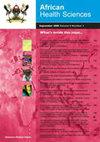内镜与TIPS治疗肝硬化继发性食管胃曲张出血的危险因素分析
IF 0.9
4区 医学
Q3 MEDICINE, GENERAL & INTERNAL
引用次数: 0
摘要
目的:分析肝硬化食管胃静脉曲张破裂患者继发出血的危险因素及生存率,比较内镜止血与经颈静脉肝内门静脉分流术(TIPS)的疗效和安全性。方法:回顾性分析我院近3年来内镜治疗食管胃静脉曲张出血合并肝硬化后继发出血的120例患者。男性65例,女性55例,年龄49 ~ 74岁,平均(59.5±8.4)岁。比较各组的病因、静脉曲张程度、出血部位、止血方式、感染、腹水、门静脉血栓形成或癌栓、白蛋白、血小板、凝血酶原活性、Child-Pugh (Child-Pugh分级是肝储备功能的诊断标准)分级。分析治疗失败的危险因素及生存时间。 结果:内镜检查失败组与止血成功组在静脉曲张程度、感染、腹水、门静脉血栓形成或癌栓、儿童Pugh分级、白蛋白和凝血酶原活性等方面差异均有统计学意义(P<0.05)。TIPS治疗失败组与止血成功组儿童Pugh分级、白蛋白和凝血酶原活性差异有统计学意义(P<0.05)。内镜组与TIPS组1年生存率无显著差异。 结论:严重静脉曲张、感染、腹水、门静脉血栓形成或癌栓、儿童pugh分型、白蛋白和凝血酶原活性是二次内镜治疗失败的主要危险因素,儿童pugh分型、白蛋白和凝血酶原活性是TIPS治疗失败的主要危险因素。两种方法的长期生存率无显著差异。 关键词:肝硬化;食管胃静脉曲张出血;内窥镜检查;小费。本文章由计算机程序翻译,如有差异,请以英文原文为准。
Risk factors analysis of endoscopy and TIPS in the treatment of secondary esophagogastric varicose bleeding with cirrhosis
Objective: To analyse the risk factors of secondary hemorrhage and survival rate in cirrhotic patients with esophagogastric varicealrupture and to compare the efficacy and safety of endoscopic hemostasis and TIPS (transjugular intrahepatic portosystemicshunt).
Methods: A total of 120 patients with secondary bleeding after endoscopic treatment of esophagogastric varicose bleeding withcirrhosis in our hospital during the past 3 years were retrospectively analysed. There were 65 males and 55 females, ranging inage from 49 to 74 years old, with an average of (59.5 ± 8.4) years old. The etiology, degree of varicose veins, bleeding location,hemostasis method, Infection, ascites, portal vein thrombosis or cancer thrombus, albumin, platelets, prothrombin activity, ChildPugh (Child-Pugh classification is a diagnostic criterion for liver reserve function) grade were compared in each group. The riskfactors of treatment failure and analyse the survival time was analysed.
Results: There were statistically significant differences in varicosis degree, infection, ascites, portal vein thrombosis or cancerthrombus, child Pugh grade, albumin and prothrombin activity between the failed Endoscopy group and the successful hemostasisgroup (P< 0.05). There were statistically significant differences in child Pugh grade, albumin and prothrombin activity betweenthe failed TIPS treatment group and successful hemostasis group (P< 0.05). There was no significant difference in 1-yearsurvival between the endoscopy group and the TIPS group.
Conclusion: Severe varicose veins, infection, ascites, portal vein thrombosis or cancer thrombus, child pugh classification, albumin,and prothrombin activity were the major risk factors for failed secondary endoscopic therapy, child Pugh classification,albumin and prothrombin activity were the main risk factors for failure TIPS treatment. There is no significant difference inlong-term survival between the two methods.
Keywords: Liver cirrhosis; esophagogastric varicose bleeding; Endoscopy; TIPS.
求助全文
通过发布文献求助,成功后即可免费获取论文全文。
去求助
来源期刊

African Health Sciences
MEDICINE, GENERAL & INTERNAL-
CiteScore
2.30
自引率
0.00%
发文量
179
审稿时长
>12 weeks
期刊介绍:
The African Health Sciences is an internationally refereed journal publishing original articles on research, clinical practice, public health, policy, planning, implementation and evaluation, in the health and related sciences relevant to Africa and the tropics. Its objectives are to: Advocate for and promote the growth of reading culture in sub Saharan Africa; Provide a high quality journal in which health and policy and other researchers and practitioners in the region can and world wide, can publish their work; Promote relevant health system research and publication in the region including alternative means of health care financing, the burden of and solution of health problems in marginalized urban and rural communities amongst the displaced and others affected by conflict; Promote research and the systematic collection and collation and publication of data on diseases and conditions of equity and influence; Promote development of evidence-based policies and guidelines for clinical, public health and other practitioners. African Health Sciences acknowledges support provided by the African Health Journals Partnership Project that is funded by the US National Institutes of Health (through the National Library of Medicine and the Fogarty International Center) and facilitated by the Council of Science Editors.
 求助内容:
求助内容: 应助结果提醒方式:
应助结果提醒方式:


